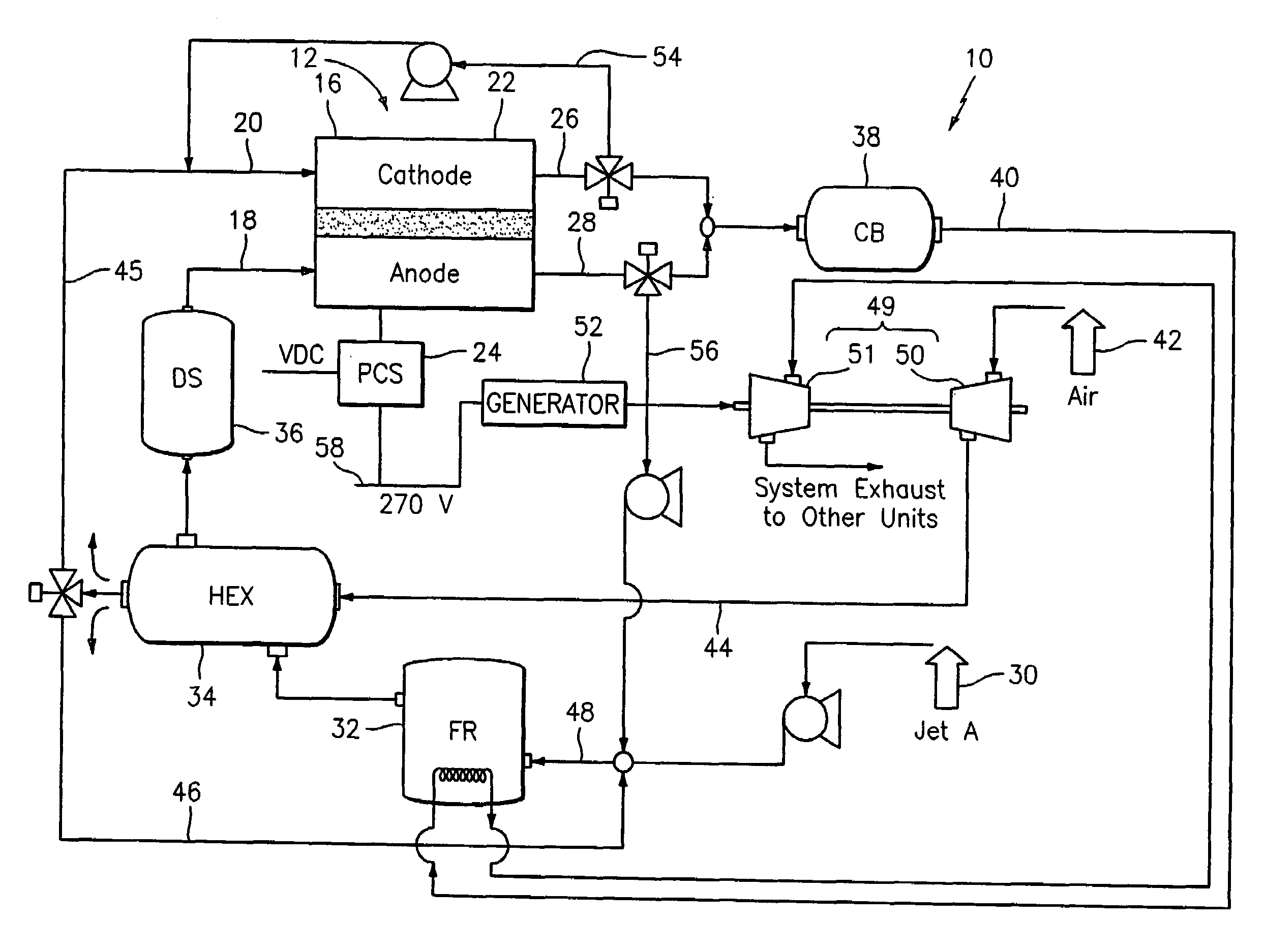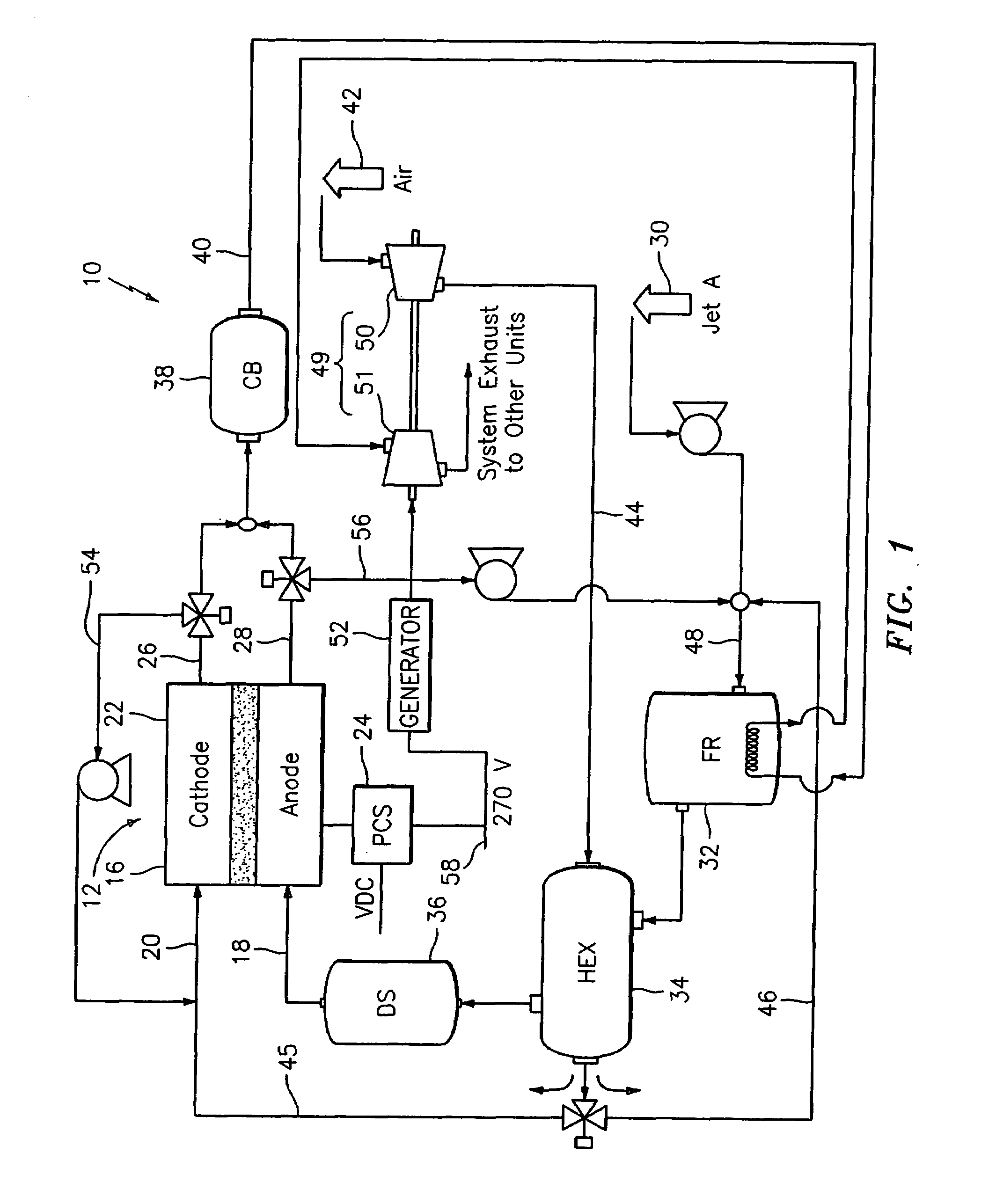Jet fuel based high pressure solid oxide fuel cell system
a fuel cell and jet fuel technology, applied in the field of jet fuel based high-pressure can solve the problems of increasing the weight of the overall fuel cell based power generation unit, the requirement for power conditioning, and the weight of the solid oxide fuel cell system in the aircraft, so as to improve the fuel burn savings, reduce emissions, and reduce nois
- Summary
- Abstract
- Description
- Claims
- Application Information
AI Technical Summary
Benefits of technology
Problems solved by technology
Method used
Image
Examples
Embodiment Construction
[0022]The invention relates to fuel cells and, more particularly, to jet fuel based high pressure solid oxide fuel cell (SOFC) systems, designed particularly for aircraft applications. The SOFC is preferably chosen to have high specific power, namely specific power greater than 0.5 kW / kg, and operate at intermediate temperatures, namely, temperature less than about 750° C. According to the invention, the SOFC is integrated into the aircraft system and utilizes a hydrocarbon fuel as a hydrogen source. The hydrocarbon fuel can be selected from the group consisting of Jet A, Jet A-12, JP-4, JP-5, JP-8, or similar hydrocarbon fuels, including sulfur-free synthetic fuel, wherein synthetic fuel denotes fuel produced from H2 / CO syngas streams by a Fischer-Tropsch like processes. The group of the aforementioned hydrocarbon fuels will be referred to herein as jet fuel.
[0023]Aircraft applications involve the use of jet fuel, and operating conditions which change during the course of the aircr...
PUM
| Property | Measurement | Unit |
|---|---|---|
| pressure | aaaaa | aaaaa |
| pressure | aaaaa | aaaaa |
| pressure | aaaaa | aaaaa |
Abstract
Description
Claims
Application Information
 Login to View More
Login to View More - R&D
- Intellectual Property
- Life Sciences
- Materials
- Tech Scout
- Unparalleled Data Quality
- Higher Quality Content
- 60% Fewer Hallucinations
Browse by: Latest US Patents, China's latest patents, Technical Efficacy Thesaurus, Application Domain, Technology Topic, Popular Technical Reports.
© 2025 PatSnap. All rights reserved.Legal|Privacy policy|Modern Slavery Act Transparency Statement|Sitemap|About US| Contact US: help@patsnap.com



